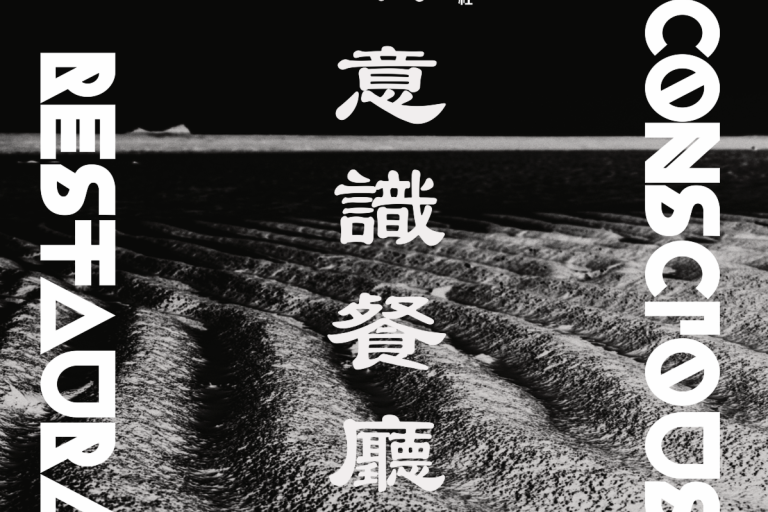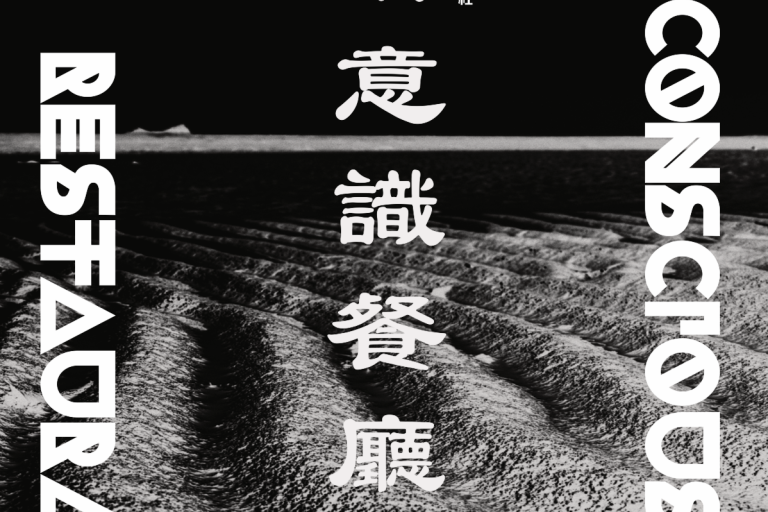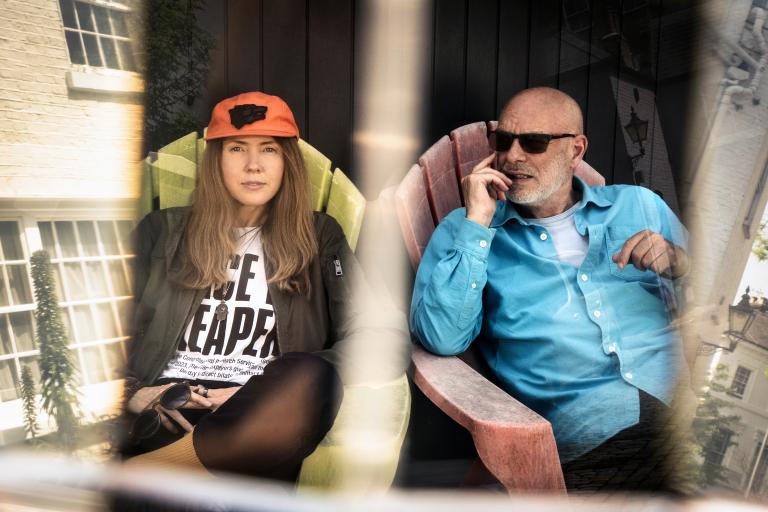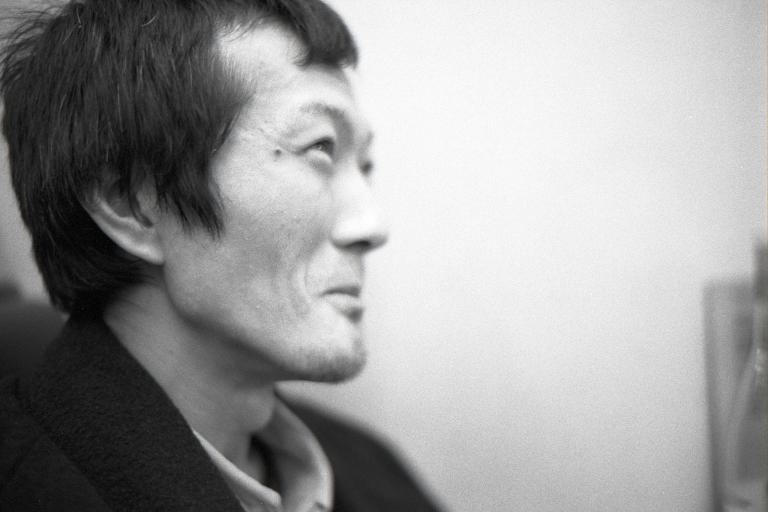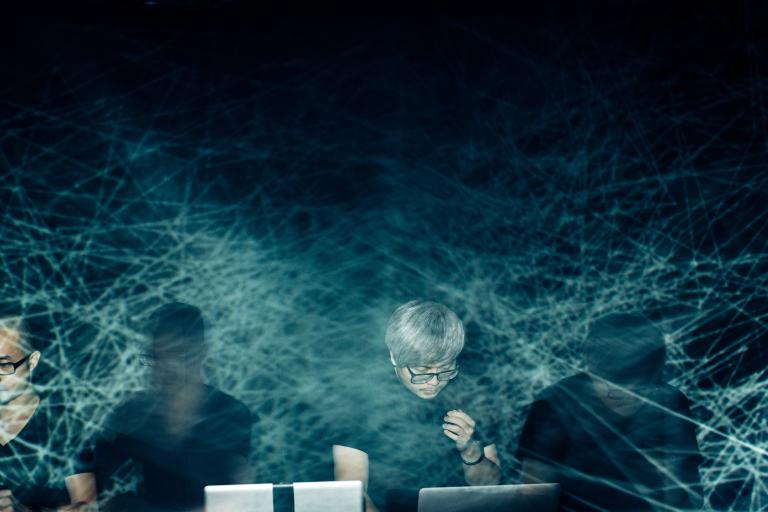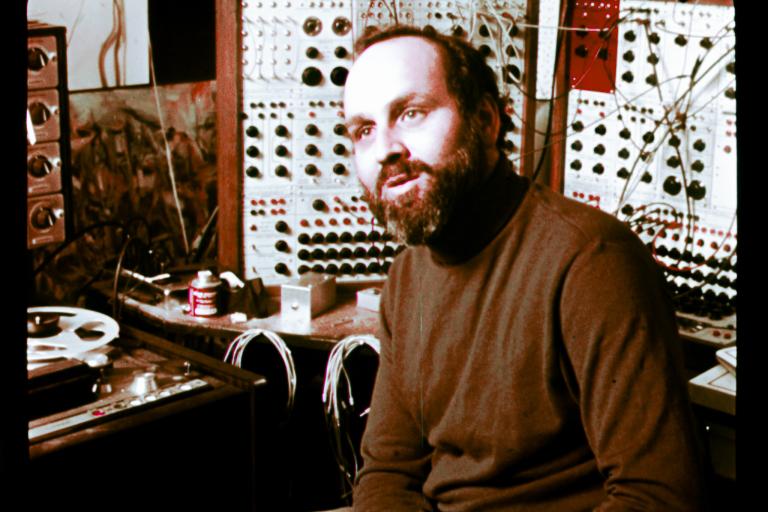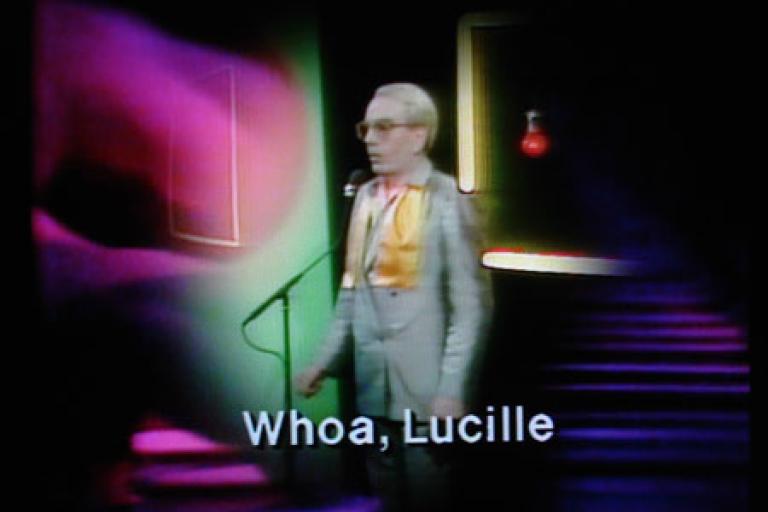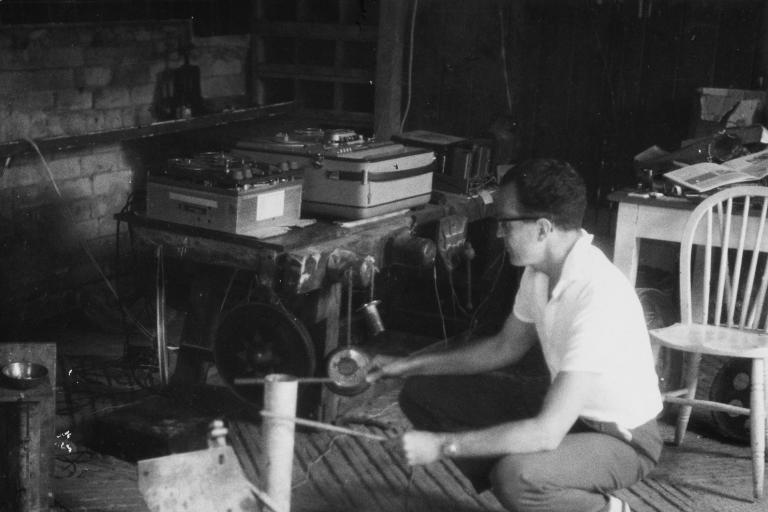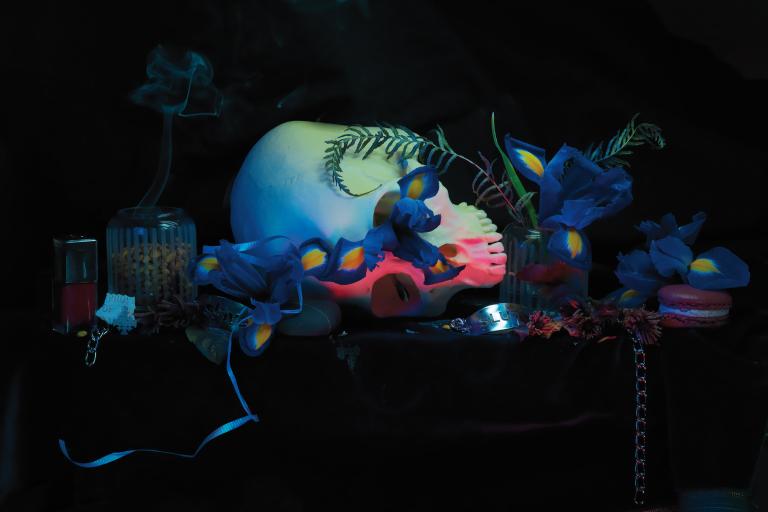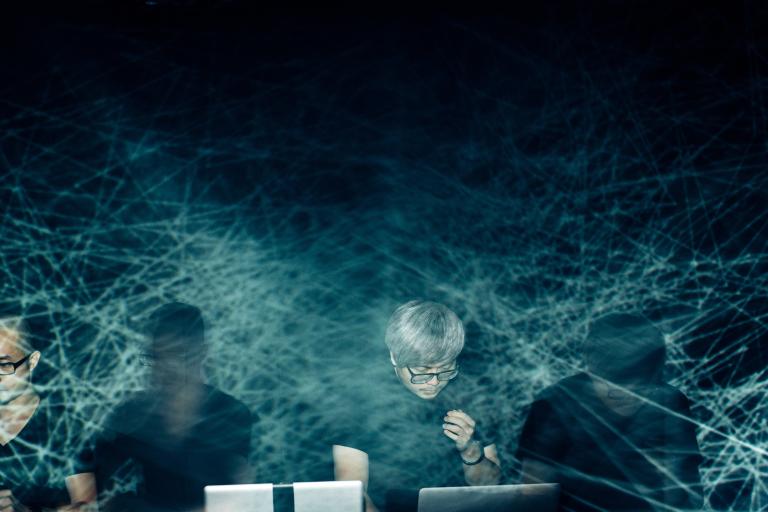Visitors to the 2016 edition of Coachella would have likely encountered an uncommon sight, even by the standards of the kaleidoscopic revelry that generally takes place: a mammoth, steampunk-esque structure, with hard, chaotic angles of salvaged wood, twisted metal, and other prefabricated building materials enclosing an intimate, nub-like interior. Inside, a cluster of screens on which plays a looped video of older men, tinkering. The installation, titled Armpit, was also featured as the Latvian Pavilion of the 2015 Venice Biennale. It was created by Latvian intermedia artist Katrīna Neiburga and her husband Andris Englītis, intended as an homage to the Soviet-era of "garage men", or the men who would retreat from the world into the sanctity of the garage to invent and tend to their hobbies.
Part reaction to postindustrial urban sprawl and part documentary of the mechanics of individual, masculine craft, the installation serves as a nostalgic reminder of spaces of manual leisure that are quickly disappearing in the digital era. It places a fierce emphasis on the physicality of the material, the tactile play of putting things together with your hands. The installation is also representative of themes that have become hallmarks of Neiburga's craft: a fastidious, anthropological lens of inquiry, a playful fascination with the rituals of everyday life, an interest in the differences of gendered roles, a study of the process of memory. In the past, she has produced pieces on subjects as varied as female taxi drivers to the growers of tea mushrooms. One afternoon, I sat down to talk to Neīburga to discuss ARMPIT, her artistic processes, and her curiosity about the peculiarities of the world.
It's been a less than straightforward path to arriving here as an artist creating a large-scale multimedia project; I see that you've impersonated a singer and a taxi driver in your past creative work, as well as worked as a stage designer. What led you from those things to what you are doing now?
It's just the way things happen, how you respond to different opportunities that arise. The way I found garages [for the work "Armpit" shown at the Venice biennale 2015] was also accidental. I was filming gardens — community gardens that we also have here in Riga. A lot of people here have garden plots in community gardens which sometimes make up entire areas. I was walking there filming different sites and people when I met a guy who told me that "real life" is in garages and that he would show it to me. So I followed him, and that is how I started the garage topic.
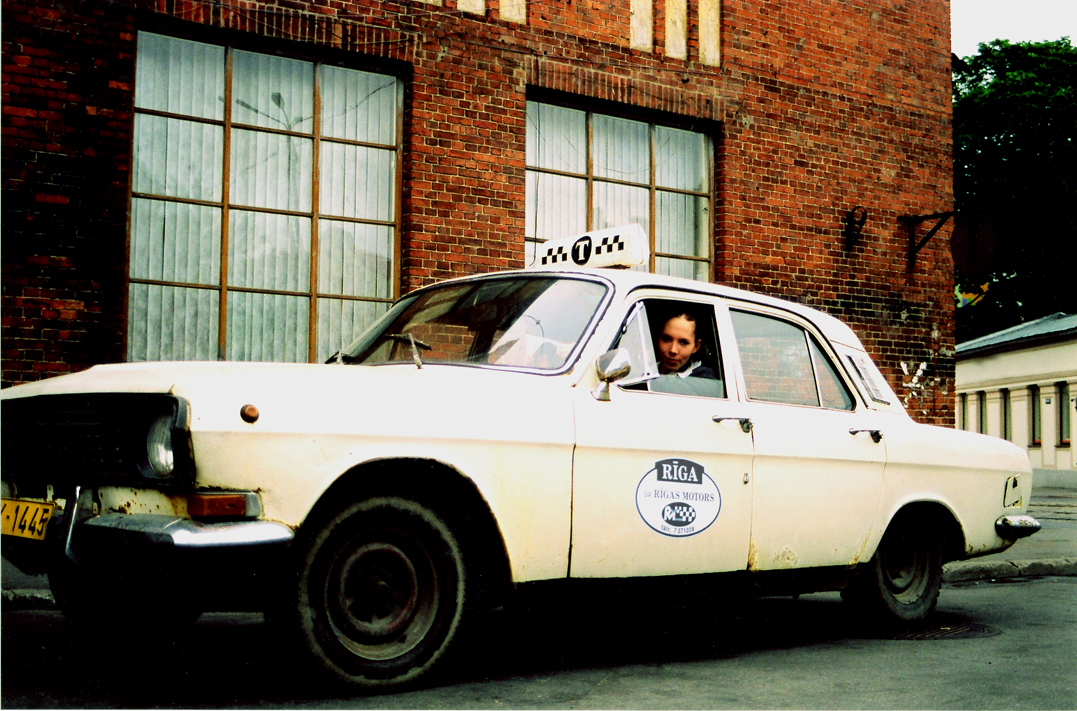
Some of my works relate to childhood memories or everyday occurrences. For instance, once I decided to impersonate a taxi driver because I knew a very charming woman who worked as a taxi driver in my childhood. She was eighty years old and still working. She was very strong, and for me, she was kind of a hero. So I decided to try to see what it's like to be a female cab driver. Another time I composed a spam song. Like anyone else, I get a lot of spam letters in my mailbox, and I made them into a song that I then sang myself. It's always interesting to experiment. I also feel a bit like an anthropologist because I'm simply very interested in people, how they live, what they think. I am interested in starting conversations with them and in using the resulting materials. In some projects, people might have been confused because they thought they would be the central characters in my piece, but it doesn't turn out that way. That is because usually, I'm just picking a few sentences or elements of those encounters and integrating them into a broader work.
A recent exhibition I had in Riga, Enlightenment in Basement, is about miracles in our daily lives. During the preparation of that exhibition I met a lot of different people, from priests to "witches", and they told me about the "miracles" they had experienced.
The physical spaces that you engage with — the taxi, the garage, the nightclub's restroom — are recognizably quotidian. What do they reveal to you?
Somehow, while engaging with small things, one can reach very... high up. One can reveal the sacred in everyday life. All these things that one repeats daily or what one perceives as normal and daily are sacred. One can pick one such subject, like the garage, the taxi, or the tea mushroom [an early work of Katrīna Neiburga was about tea mushrooms], and those mundane subjects serve as keys to individuals. You can't just go around telling people, "Hey, hello, I want to get access to your inner truth." They will very likely retort, "What are you talking about?" But if you say, like, "Hey, can you tell me about your garage?" you can get to something more. So these topics can be like keys to human understanding. I hope that I'm touching upon some serious things in all this fooling around.
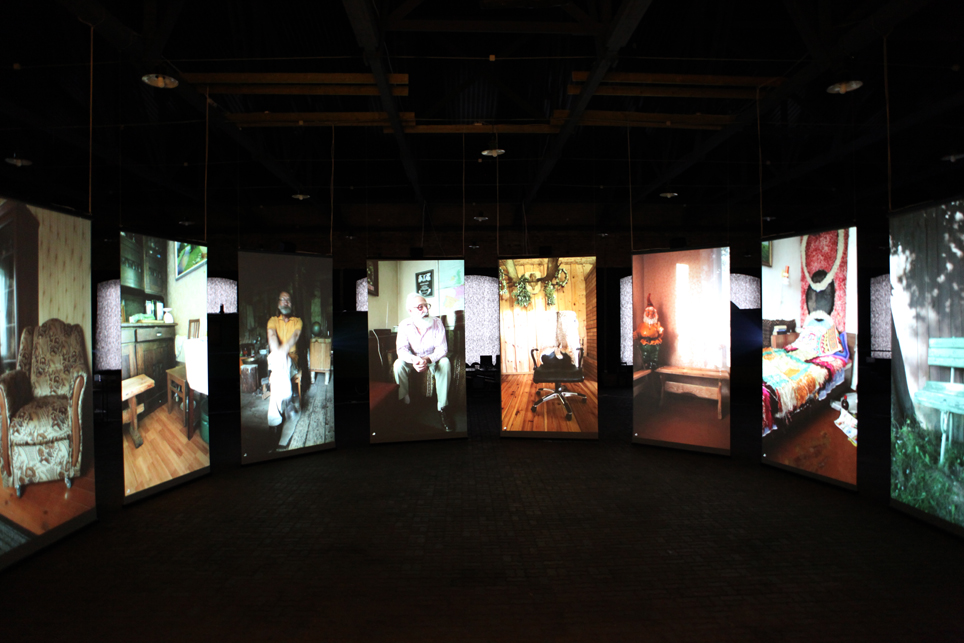
I was interested in your description of yourself as an "anthropologist". How do you see your work in relation to anthropology and art?
As I said a little bit earlier, I feel as if I'm collecting observations. An anthropologist might say the same thing. However, the difference is that I'm always rearranging them. I just selectively pick something that I'm looking for. Actually, I'm trying to find what I imagine to find. I'm trying to get that something and insert it in my own arrangement. Then it attains a different meaning. So it's not just retelling or conveying to the viewer the "untainted" observation. I am rearranging my observations and telling my own story. So that's the difference between an anthropologist and me.
Talking more specifically about this project, what was your personal experience with the "garage men"? You said that you stumbled into this subject matter, but how did it develop?
There were a lot of levels. I started to film those guys, and then we decided to work together with my husband, a painter, and an installation artist. We actually wanted to involve those garage people even more so that they would do some crazy things. For example, in Armpit, we had this breathing floor. It's a floor that moves up and down, so you feel like it's breathing. Or to make a moving tower, where you go inside, and this tower moves around you. However, those guys are almost childlike. So sometimes they would do some crazy stuff, but we didn't get them doing what we really wanted. We realized that we could maybe absorb those people in our work but not actually work together. Because they didn't understand our thoughts, and they weren't really interested in understanding our thoughts!
I filmed a lot in these post-Soviet garages, these kinds of areas. I put out an advertisement where I asked locals to show me their garages. After that, I got emails from some of their wives, who wanted to know what was actually inside there. So I was a little bit like a spy, going there and then telling them what I saw. This short film, Garage, is not really about men and how they do their stuff, but more about relationships between women and men and how they can live together. What patience it takes! Sometimes it's really annoying — some of these men go away every day from home to their garage "to do something", maybe something totally useless. Some of them are like small boys going to the playground, while women carry on with daily tasks. So in this movie, we sanctify this male space one can see in Armpit [the work presented at Venice Biennale 2015]. Then I went to these women to ask them what they thought about it. So Garage is more about this relationship.
What did you find out about these relationships?
There was nothing really disturbing. The garage is just a place where you can hide from everyday life. Everybody needs that kind of place; women too have places to go, although they perhaps don't have exactly that kind of place. It also gives males a sort of legitimate excuse because if you say that you are going to the garage, it normally means that you're going to work, to repair or fix something.
I saw some seriously interesting garages along the way. One of them was actually sort of a bird clinic. When you open the door of the garage, you see that it is full of birds. The owner is treating birds there. Another guy was working there with old and dead stuff, such as dead animals. He said he was making a man out of those things. Not a robot, not a skeleton, but a real man. Another guy was making various tools to heal people — like an "Ozonator", a machine that supposedly transforms oil into ozone. It has healing properties, or so he thinks. He also heals his wife with it.
Armpit indulges the male fantasy of the tinkerer in the workshed, framing it as postindustrial nostalgia. Soviet garage men inspire your installation, but there are similar representations of it across the West. Why do you think this image is so compelling?
I don't know about younger people. It's not very often you can meet younger people in garages. Sometimes, of course. But not many since the 90s or the 00s, when everything became so video- and internet-based. Outsourcing of craftsmanship applies even to artists. For instance, when we were at Coachella Festival, I got the impression that artists usually give their sketches to someone else who then does the stuff for them, such as making those huge installations they have there. On the other hand, we did everything by ourselves there because one can almost sense when artists have touched the work themselves. Then, the work experience is further enriched because you think more about how it came to be. We couldn't imagine giving our sketch to someone else to make the work.
If you are using your own hands to make your work, you can at the same time clean your head and think about things more deeply. The physicality of the process allows you to dig deeper mentally. I guess it also applies to people who enjoy working with their hands — you can meditate in the process, which again gives you calmness and a sense of safety. You acquire confidence that you can do something and that you are doing something. And not only that, you're imagining or drawing it on a computer and sending it to someone else to execute it.
A lot of your work seems to hold a great fascination with experiences that are guided by gender; it's the female taxi driver (Traffic), the garage man (Armpit), the women in the bathroom of a nightclub (What's in a Girl's Handbag?). Do you see gender as a particular subject, or is this just coincidence?
If you'd asked me that question some years ago, I would have replied no, that it's just a coincidence. But if you look at my work over time, it is obvious that it has gender aspects. It's a tricky issue. I don't want to sound particularly feminist, but I see how men treat women in Latvia daily. The last example was when the church in Latvia had a vote on whether to accept female priests or not. It's a Lutheran church, not a Catholic church. Still, their leadership was so content when the no vote prevailed. That is really leaning towards a medieval worldview. I see a lot of strange stuff like that.
I'm a mother of two children, and I feel this big tension between being a mother and an artist. It's hard because you're always just partly with your children and just partly with your art. When you're with your art, you want to be with your children. When you're with your children, you want to be with your art. I've noticed it is different for men - they can more easily take their time and do their art. They seldom seem to have second thoughts regarding that. If they are doing their art, they are in it completely. The female artist's brain is more scattered — I have the impression that we never allow art to stand in the way of family life. There are many examples like this, and sometimes I am apparently touching upon them in my art.

Have you sensed any of this as you go about your work as an artist in Latvia? Are you treated differently because you're a female artist?
I have to say that in some situations, it's more advantageous to be a woman artist. It gives certain freedom of action. I like to play different roles, when I'm, for instance, going outside to clubs to film girls and explore what they have in their handbags, or when I'm playing the role of a cab driver, or when I'm playing the stupid girl who goes to the garage and wants to know what's inside there. I think in those situations, it helps me to be a woman. But maybe it is just my personal experience — some people have complimented me that I'm good at listening to other people and opening them up.
For sure, with garages, it was better that I'm a woman because I imagine that if some guy went there, he would be just rejected. But if a young woman is coming with an interest in what you're doing, they say, - "Wow! Sure, I'll show you everything; just ask!" So yes, I think sometimes I can use my gender in my work.
Basically, all the garages were open to me. I never had a situation where someone didn't want to speak. Though sometimes they didn't want to let me film, which was interesting. It feels like television, social media, and the internet have changed people - they have become more cautious and sensitive. When I was filming around the millennium shift, people were more open in front of the camera and didn't express any fear. Now everyone wants to know what exactly am I doing and for what purpose. So it is getting harder to do these things.
That's interesting to hear of the challenges that cyberspace might pose to your art. Do you think that methods of documentary filming will be forced to change?
Actually, I think it will get much worse. It's a difficult topic, all these internet influences... How do you use your social media profile, how somebody can use you, how the information circulates, etcetera. I think more and more people will want to gain some anonymity and hide themselves.
In some of your work, I've noticed a certain nostalgia for a pre-digital time, a longing for the physical. Is that something that attracts you?
Sure, I have this nostalgia for Soviet times. To be sure, it is not political; it is nostalgia for my childhood. I had my childhood in Soviet times, and I can't do anything about it. Childhood is, for everyone, pretty much the prime time where so many developmental things happen. So it was a time when I became a human being. Many important memories and topics trail back to childhood, and that was in Soviet times. And my childhood was great! My mother is a writer, and my father is an artist, and we had a very small place to live, but that place was always full of different people such as poets, writers, and artists. It was very interesting — at times even bohemian.
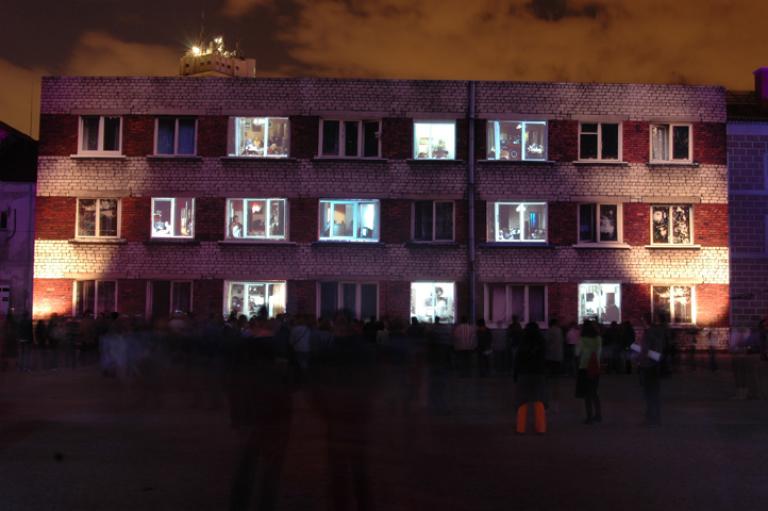
Who or what are some of your artistic influences?
I like a lot of artists. There are sometimes artistic pieces I see and feel stupid that I was not aware of those. But many influences really stem from everyday life. I'm getting more inspired by things around me than artworks. The works I see at exhibitions are kind of closed. They're done. They don't make my fantasy grow. My imagination works when I can see something I can utilize, and that is in the living environment. It's important for me to go to exhibitions, to learn and see other people's works, but it doesn't help me with my own work. And it is a good feeling to discover sometimes that other artists are doing similar stuff, contemplating the same things. But I won't tell you any names. I could, but then I'd later think that I should've named others too.
Another activity that helps me a lot to think is driving in a car somewhere alone. Then also being in nature. Nature in Latvia is generally very important. Funny that I am naming these activities where I'm basically alone, even though my work is related to people and even has anthropological aspects. But those lonesome moments are those where usually the ideas are born. When you're alone, things you've experienced acquire a structure in your brain.
What's the latest piece you've been working on?
The latest work I've done is the short film, Garage. I made it from all the material I filmed for "Armpit" while going around these very strange places I mentioned before – those "garage cities". There I was filming various men in their "caves". I recently premiered it here in Latvia.
Katrīna Neiburga is an alumnus of the SHAPE platform.

